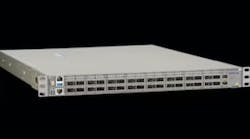Nokia Advances AI-Ready Data Center Networking with Ultra Ethernet Test Success
Nokia and Keysight test Ultra Ethernet
Nokia has successfully completed end-to-end testing of Ultra Ethernet (UET) traffic across its data center switching platforms, including the company’s 7220 IXR and 7250 IXR switches, in collaboration with Keysight Technologies.
The achievement shows Nokia’s readiness to integrate Ultra Ethernet Consortium (UEC) Specification 1.0 capabilities into its data center networking solutions, and “reinforces its leadership in building extreme-scale, lossless, low-latency networks for modern data centers built for the AI era.”
Meeting the performance demands of AI-driven data centers
Artificial intelligence workloads are reshaping data center network requirements. AI training and inference depend on real-time data exchange, where even minor packet loss or latency can disrupt performance and delay project timelines.
These requirements have pushed data center networks and created demand for new architectures capable of managing massive bandwidth while maintaining reliability.
The Ultra Ethernet Consortium’s Specification 1.0 introduces a new UET layer made to address HPC and AI challenges.
Validating UET interoperability
The test validated 800 GE interfaces carrying UET traffic generated by Keysight’s AresONE 800GE-8P-QDD-M platform across all variants of Nokia’s 7220 IXR-H5 and 7250 IXR-10e switches, both powered by Nokia’s SR Linux Network Operating System (NOS).
“Networking technologies are evolving rapidly to meet the demands of large-scale AI clusters. Ultra Ethernet is one of the approaches under active development and is enabling the next generation scale-out fabrics that will power 100K+ AI clusters with innovation from PHY/Link layer to Transport and Application layer,” said Ram Periakaruppan, Vice President and GM, Network Applications & Security business at Keysight.
Nokia’s AI and HPC portfolio
As Nokia integrates UEC Specification 1.0 features into its data center fabric solutions, customers gain immediate access to an AI-ready portfolio that supports both Remote Direct Memory Access over Converged Ethernet (RoCEv2) and Data Center Quantized Congestion Notification (DCQCN).
During testing, RoCEv2 and UET traffic were validated in parallel at 800 GE, demonstrating flexibility and coexistence.
